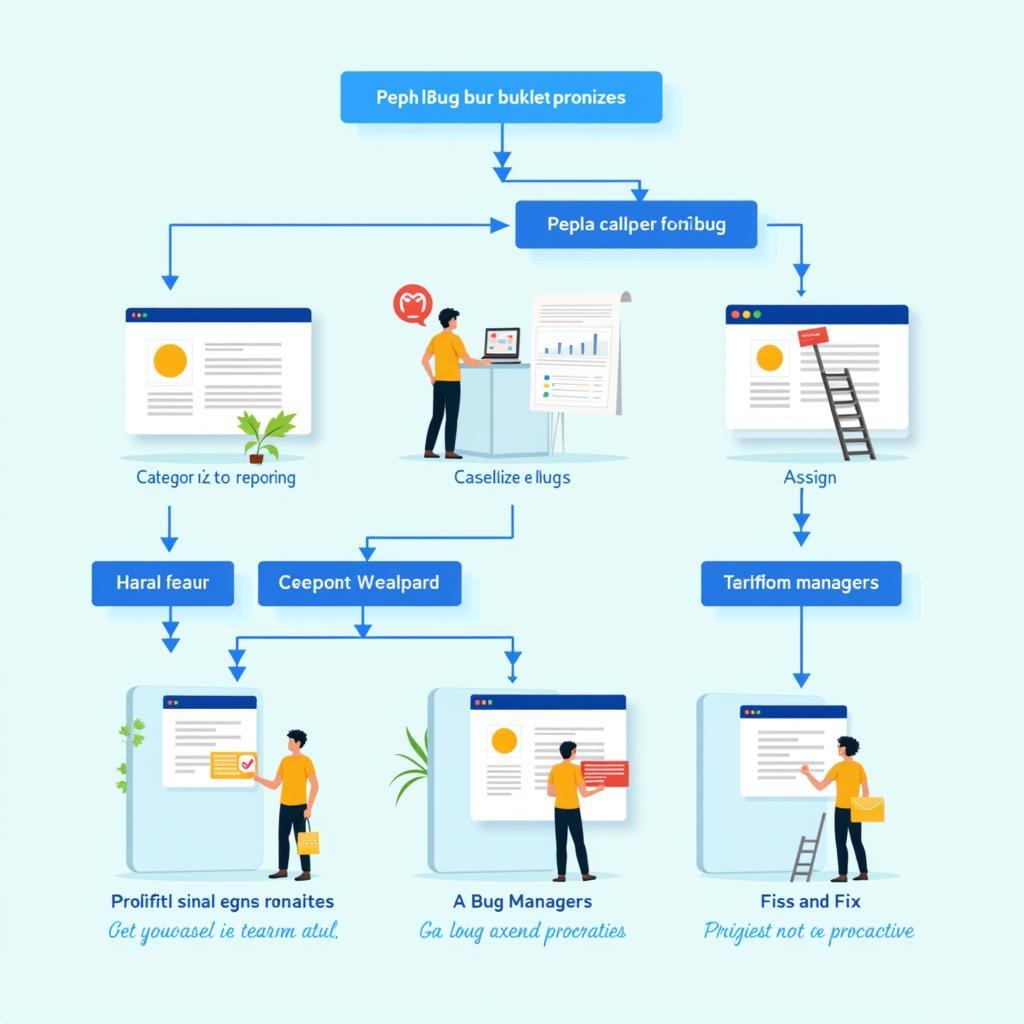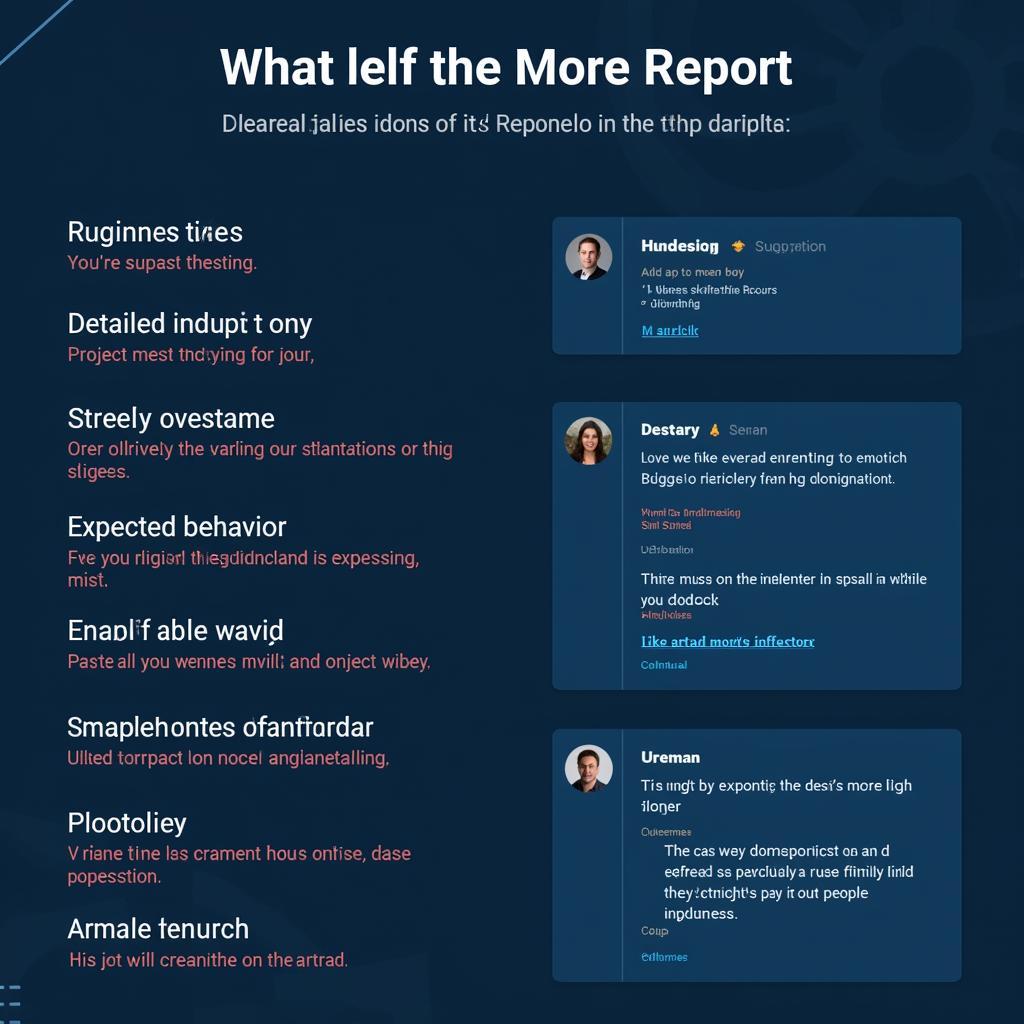Bug Buckets are essential tools in game development, acting as centralized repositories for tracking and managing software defects. They help development teams organize, prioritize, and resolve issues, ultimately contributing to a smoother, more enjoyable gaming experience for players. From minor graphical glitches to major game-breaking bugs, bug buckets ensure that all reported issues are documented, categorized, and addressed efficiently.
Understanding the Importance of Bug Buckets
Bug buckets play a crucial role in maintaining the quality and stability of a game throughout its lifecycle. They provide a clear overview of all known issues, allowing developers to track their progress, assign responsibility, and analyze trends. This structured approach ensures that no bug falls through the cracks and that resources are allocated effectively to address the most critical problems first.
How Bug Buckets Benefit Game Developers
- Centralized Tracking: Bug buckets consolidate all bug reports into a single location, eliminating the risk of information being scattered across emails, spreadsheets, or other communication channels.
- Prioritization and Organization: By categorizing bugs based on severity, impact, and affected areas, bug buckets allow developers to prioritize fixes and allocate resources strategically.
- Improved Collaboration: Bug buckets facilitate communication and collaboration among team members, enabling them to share information, discuss solutions, and coordinate efforts effectively.
- Enhanced Workflow: A well-maintained bug bucket integrates seamlessly with the development workflow, streamlining the bug fixing process and reducing overall development time.
- Data-Driven Insights: Bug buckets provide valuable data on the types and frequency of bugs encountered, which can be used to identify recurring problems and improve development processes.
 Bug Bucket Workflow Visualization
Bug Bucket Workflow Visualization
Types of Bug Buckets
Different types of bug buckets cater to specific needs within the game development process. Some common types include:
- General Bug Bucket: Used for tracking all types of bugs, regardless of their severity or area of impact.
- Platform-Specific Bug Bucket: Dedicated to bugs affecting a particular platform (e.g., PC, mobile, console).
- Feature-Specific Bug Bucket: Used to track bugs related to a specific game feature or module.
- Regression Bug Bucket: Focuses on bugs that reappear after a code change or update.
Best Practices for Managing Bug Buckets
Effectively managing bug buckets requires careful planning and consistent adherence to best practices. Here are some key considerations:
- Detailed Bug Reports: Encourage clear and concise bug reports with detailed descriptions, steps to reproduce, and supporting evidence like screenshots or videos.
- Consistent Categorization: Establish a standardized categorization system for bugs to ensure accurate tracking and prioritization.
- Regular Review and Triage: Regularly review and triage bug reports to ensure that they are assigned to the appropriate team members and prioritized correctly.
- Clear Communication: Maintain open communication channels between testers, developers, and other stakeholders to facilitate efficient bug resolution.
- Integration with Development Tools: Integrate bug buckets with development tools like version control systems and project management software for seamless workflow.
 Effective Bug Report Example
Effective Bug Report Example
“A well-structured bug bucket is not just a list of problems; it’s a roadmap to a better game.” – John Smith, Lead Game Developer at VNG Game Studios
Utilizing Bug Buckets for Player Feedback
Bug buckets can also be used to gather player feedback and improve the overall gaming experience. By encouraging players to report bugs and issues, developers gain valuable insights into real-world gameplay scenarios and can identify areas for improvement that might not have been discovered through internal testing.
Engaging the Community
Creating dedicated channels for player feedback, such as in-game reporting tools or community forums, can foster a sense of ownership and collaboration. Acknowledging and responding to player reports promptly demonstrates a commitment to quality and strengthens the relationship between developers and the community.
“Player feedback is invaluable in identifying and resolving issues that can significantly impact the player experience. Bug buckets help us channel that feedback into actionable improvements.” – Jane Doe, Community Manager at VNG Game Studios
Conclusion
Bug buckets are indispensable tools for game development, enabling teams to effectively manage software defects and improve the overall quality of their games. By implementing best practices and fostering a culture of collaboration, developers can leverage bug buckets to streamline their workflows, enhance player experience, and create truly exceptional games. Remember, a well-managed bug bucket is more than just a list of bugs – it’s a key ingredient for success in the competitive world of game development.
FAQ
-
What is a bug bucket?
A bug bucket is a centralized system for tracking and managing software defects in game development. -
Why are bug buckets important?
They help organize, prioritize, and resolve bugs, contributing to a better player experience. -
What are some types of bug buckets?
General, platform-specific, feature-specific, and regression bug buckets. -
How can I report a bug effectively?
Provide a clear title, detailed description, steps to reproduce, and supporting evidence. -
How can player feedback be incorporated into bug buckets?
By creating dedicated channels for player reports and integrating them into the bug tracking process. -
How do bug buckets help improve game quality?
They enable developers to identify and fix bugs, leading to a more stable and enjoyable game. -
What are some best practices for managing bug buckets?
Detailed reporting, consistent categorization, regular review, and clear communication.
For any support needs, contact us at Phone: 0902476650, Email: [email protected] or visit us at 139 Đ. Võ Văn Kiệt, Hoà Long, Bà Rịa, Bà Rịa – Vũng Tàu, Việt Nam. We have a 24/7 customer support team.





